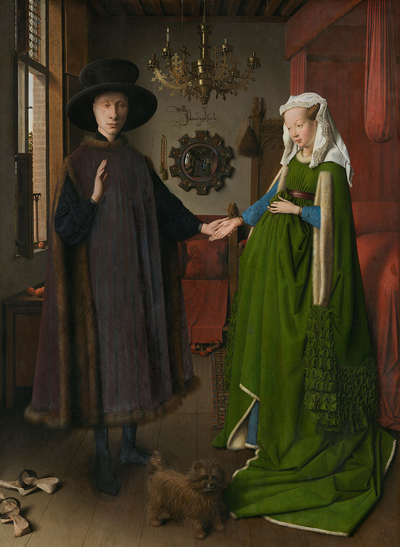Color Matters: The Brain: Color & Culture Matters
The bride in this Renaissance masterpiece wears green as a symbol of her fertility. She is slouching in imitation of pregnancy, thus indicating her willingness to bear children.

Giovanni Arnolfini and His Bride
by Jan Van Eyck, 1434
In Celtic myths the Green man was the God of fertility.
Later in the millennium, Early Christians banned green because it had been used in pagan ceremonies.
Nevertheless, as evidenced by this 15th Century wedding portrait, the color green was the best choice for the bride's gown because of its earliest symbolism.
Of note is the continued symbolism attached to the color in the latter part of this century. Anyone who chooses a green m & m (an American candy which contains an assortment of different colored chocolate sweets) is sending a somewhat similar message. Green has been reinterpreted by late 20th century American culture to signify a state of heightened sexuality in this specific situation.

- Green was a sacred color to the Egyptians representing the hope and joy of Spring.
- Green is a sacred color to Muslims.
- Japanese Emperor Hirohito's birthday is celebrated as "Green Day" because he loved to garden.
- It is said that green is the most restful color for the human eye.
- Green has great healing power. It can soothe pain.
- People who work in green environments have fewer stomach aches.
- Green is beneficial around teething infants.
- Suicides dropped 34% when London's Blackfriar Bridge was painted green.